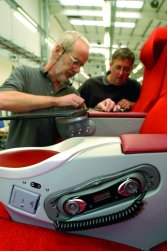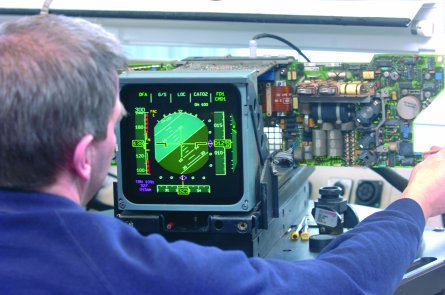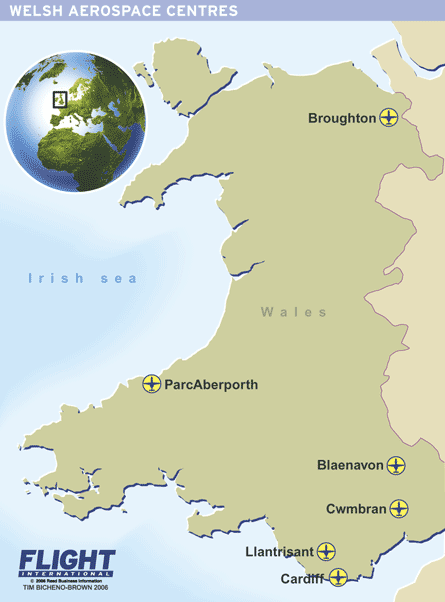By Murdo Morrison in Cardiff
Twenty years ago, Wales was in a sorry state. Its traditional industries such as coal mining and steel manufacturing were dying, its cities were seen as dreary and unfashionable, and its politicians and media accused London of neglecting the principality. Even the beloved national rugby team was enduring a bad patch. Wales felt like a region on the periphery – in every sense.
Today, there is a new zest about Wales: the capital Cardiff shines with modern high-rise hotels, restaurants and office blocks; the Millennium Stadium is the finest in the UK; and the once run-down docks are home to landmark buildings including the new Welsh Assembly, the regional authority whose responsibilities include economic development.
|
|
|---|
There is a coming of age about Wales’s youngish aerospace industry too. Concentrated in two “clusters” in south-east Wales and the north-east near Chester, with a smaller outpost on the west coast, the areas have little in common. However, they are all promoted under the Aerospace Wales banner by the Assembly government. Despite lacking real powers, it has provided a focus in terms of “branding” the Welsh aerospace industry and luring investors by channelling funds provided to Wales as an economically challenged region of the UK and Europe.
South-east Wales has seen an influx of manufacturing, defence electronics and maintenance, repair and overhaul (MRO) businesses over the past decade and a half, most of them attracted by the area’s ready supply of lower-cost labour and government incentives. Major players include British Airways Engineering, EADS, General Electric Aircraft Engine Services, General Dynamics and Nordam, as well as the government’s Defence Aviation Repair Agency (DARA).
Largest sector
MRO is by far the area’s largest sector. The Assembly government claims around a third of the UK’s MRO activity by volume is within 48km (30 miles) of Cardiff airport.
The industry in the north-east is dominated by Airbus’s Broughton wing plant, which employs 7,000 people, more than a third of the 20,000 people who work in aerospace in Wales. The plant used to be known as Airbus Chester because of its proximity to the famous Roman city, situated less than 10km away on the English side of the border. But in recent years – like a footballer discovering a bloodline to qualify for a different country – it has rebranded itself Broughton, a village just inside Wales. Soaring Airbus production rates and the arrival of the A380 has seen the workforce at Broughton grow by about 2,000 since the start of the decade. Next to the plant, the Assembly government is marketing a 17Ha (42 acres) greenfield industrial site – Hawarden Business Park – in an effort to create a cluster of Airbus suppliers and other aerospace companies. Raytheon Aircraft Services and Raytheon Systems are already based there.
The Assembly government is also keen to foster a more niche “centre of excellence” on the remote west Wales Cardigan coast at ParcAberporth, a 20Ha technology park and airfield exclusively for companies developing and testing unmanned aircraft and technologies, and the only such facility in Europe. The Assembly-owned site, which is next to a UK Ministry of Defence coastal missile firing range and surrounded by farmland, will on 7 July host the second ParcAberporth Unmanned Systems exhibition and flying demonstration. The first – in September 2005 – saw the debut flight of a large unmanned air vehicle in UK civil airspace, the Elbit Hermes 450 unmanned air vehicle being used for the MoD’s Thales UK-led Watchkeeper surveillance programme (see box). So far, a trickle of small organisations have set up shop at ParcAberporth, but the Assembly government hopes the event will persuade some bigger aerospace names to move in.
 |
|---|
Although the Assembly government tends to promote the Welsh aerospace sector as a distinct entity, its two main clusters have closer links with their neighbouring English regions than with each other. Broughton is effectively part of the UK’s biggest aerospace region, centred on Manchester and Lancashire and home to hundreds of small and medium-size enterprise (SME) aerospace suppliers. Meanwhile, along the M4 motorway from south Wales is Bristol and the west of England, where many big aerospace names, including Airbus, Messier-Dowty, Rolls-Royce and Smiths are based.
“We don’t see ourselves as Fortress Wales – we are closely integrated with the rest of UK industry,” says John Whalley, director of Aerospace Wales Forum, a grouping bringing together government bodies and 130 businesses and funded by the Assembly government. The advantage Wales has over its neighbouring regions is the availability of UK government and European Union grant-aid for new investors. In north Wales, for instance, says Whalley, “you have the advantage of all the infrastructure of north-west England on your doorstep, but with more incentives to invest in Wales”.
These incentives have been a crucial factor in the decision of many companies to set up in the principality in recent years. The collapse of coal mining and heavy industry in the 1980s left Wales with one of the highest rates of unemployment in the UK. As a result, successive governments have been keen to attract new industry. Consumer electronics provided hope for a while – until the Asian economic crash of the late 1990s led to a number of factory closures. Aerospace has proved to be a better long-term prospect.
Prizes to be won
|
|
|---|
| Contour Seating arrived in Wales five years ago and employs 620 people to make premium airliner seating |
Precision engine components manufacturer Doncasters last year invested £6.5 million ($12 million) to create a “centre for excellence” in forging engine blades and casings at its Blaenavon plant, near Abergavenny, in south Wales. The Derbyshire-based company wanted to create one facility from which it could manufacture and machine “engine-ready” components and expects to add at least 100 new jobs to its 450-strong workforce over the next two years.
The Welsh Assembly government provided £2 million in grants, but Doncasters says the abundance of skilled labour – many of them former steelworkers – helped swing its decision. “We define Wales as a low-cost economy within the UK, because of the financial incentives for investing there and the availability of relatively low-cost labour,” says Mike Askew, the company’s managing director of aerospace. The company has a number of factories outside the UK, including in Mexico, but, according to Askew, “these were not processes we could put overseas”.
One of the biggest investors in Welsh aerospace has been British Airways. Three of the airline’s engineering businesses are based in the principality, including a Boeing 777 and 747 MRO facility at Cardiff airport and BA Interiors – which refurbishes cabins – in Blackwood in the Valleys. The third, British Airways Avionics Engineering (BAAE), moved from Heathrow airport to a greenfield location at Pontyclun, near Cardiff, 13 years ago. The business, which employs 300 people and has revenues of £32 million, maintains and repairs electrical and electronic components for BA aircraft and third-party customers including Virgin Atlantic.
“We chose here because the decline of traditional industries meant there were lots of engineers from steel and mining who could be trained as aero engineers,” says general manager Rob Pendle.
Now the business is set to expand, by taking on more third-party work and moving into mechanical repairs, including for items such as aspirators for escape chutes, trash compactors and cargo rollers, reducing its need for subcontractors.
Contour Seating in Cwmbran, near Newport, is a more recent arrival to Wales, opening its greenfield factory making premium airliner seating five years ago. The business – part of the Britax group – employs 620 people and is one of a handful of suppliers of business- and first-class seats, developing, among other products, the BA lie-flat bed in 2000. Its customers include Air Canada, Emirates and Virgin Atlantic and its managing director, Phil Davies, sees a comfortable future for the company as more airlines move to lure elite travellers with “super first class” cabins, where each seat can cost close to $200,000. “For the passenger, it’s all about comfort and gadgets,” he says. But for Contour the constant challenge is weight. “Up to 80% of the weight of the seat is metal. It’s all about getting that down by developing the right composite materials. There are big prizes to be won.”
Ready infrastructure
 |
|---|
| The availability of skilled labour is an attraction for aerospace companies |
One thing Wales is not short of is infrastructure. Aside from plenty of development land in the former mining and steel communities in south Wales, and new business estates at Broughton and Haverfordwest in the south west, the Welsh Assembly is also tasked with turning the 140Ha RAF St Athan near Cardiff into the region’s biggest aerospace park. Centrepiece of the site is a 45,000m2 (485,000ft2) “superhangar” with six bays with room for a small narrowbody airliner. Ironically, that the superhangar stands empty is the result of one of the biggest blows to aerospace in Wales.
In February, UK armed forces minister Adam Ingram confirmed that, just a year after the superhangar opened, DARA was ending fast-jet maintenance at St Athan from April next year and moving it to the operational RAF bases as part of a major shake-up of the maintenance organisation. The business of maintaining the BAE Systems Harrier GR7s and Panavia Tornado GR4s had, along with DARA’s engine operations, “entered terminal decline” and there was no prospect of the businesses becoming viable, said Ingram.
Although maintenance of the Royal Air Force’s Vickers VC10 tanker-transports is continuing at St Athan for the time being, about 450 jobs are likely to go, to the fury of the trade unions. The Assembly government is seeking tenants for the superhangar and the rest of the site. So far, Boeing MRO specialist ATC Lasham is the only significant new arrival; it moved into a smaller former DARA hangar – known as “Twin Peaks” – last year. The Assembly government has high hopes of attracting further investment to the site, which includes a 1,825m (6,000ft) runway and 20,000m2 of offices, paintshops and workshops.
The biggest hope is a deal with the Ministry to Defence to base a large part of its new joint forces training programme at St Athan. The Assembly government is backing a bid by Metrix, one of two consortia bidding for the Defence Training Rationalisation contract.
Gathering clouds
The grouping – which includes AgustaWestland, Qinetiq, Raytheon and Serco – plans to base its training academy at St Athan. A preferred bidder is expected to be announced in October and, if Metrix is successful, it could create 5,500 jobs in the area, says the Assembly government.
But there are clouds lurking for Welsh aerospace. Maintenance providers in lower-cost economies have already begun to aggressively target engineering work traditionally carried out in western Europe and North America, a threat to south Wales’s extensive MRO sector. And many think BAE’s decision to sell its 20% stake in Airbus to EADS – together with a failure by the UK to invest sufficiently in research and development in the field of composite structures – could endanger future Airbus investment in Broughton, which has been designing and building wings for more than three decades. If the Assembly government fails to generate interest in St Athan and its superhangar and its other neat new technology parks at ParcAberporth and elsewhere, it could be left with an embarrassing collection of white elephants – a modern legacy of overarching aerospace ambitions in a land still littered with the relics of its heavy industrial past.
Source: Flight International


















